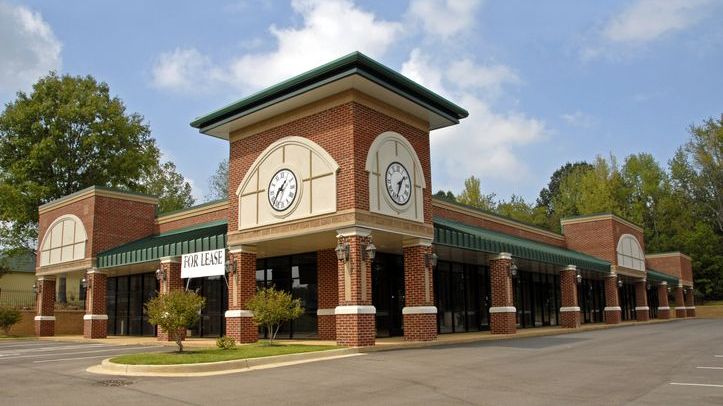Leasing commercial real estate is a critical step for many business owners, providing the space necessary to operate and grow their businesses. However, commercial leases are more complex than residential leases and involve numerous considerations that can significantly impact a business’s success. By navigating the leasing process effectively, business owners can ensure they choose the right space that meets their needs and supports their long-term goals.
Whether you’re a business owner looking to lease commercial property or a retail investor in need of investment advice, consider speaking with a financial advisor.
Understanding Commercial Real Estate Leases
Commercial real estate leases are legal contracts that detail the terms and conditions for renting commercial property, agreed upon by landlords and tenants. These leases specify the rental amount, lease duration and responsibilities of both parties. Unlike residential leases, which typically involve shorter terms and less complexity, commercial leases often cover longer periods and include more detailed provisions.
Components of a Commercial Lease
A commercial lease includes various components that outline the obligations and rights of both the landlord and tenant. Key elements typically found in a commercial lease are:
- Lease term: The duration of the lease agreement, including start and end dates.
- Rent: The amount of rent the tenant agrees to pay, which can be structured in various ways, such as a fixed amount or a base rent plus operating expenses.
- Operating expenses: Costs related to property maintenance, property taxes and insurance, which may be covered by the landlord, tenant or shared between both parties, depending on the lease type.
- Maintenance and repairs: Clauses detailing the responsibilities for maintaining and repairing the property, often divided between the landlord and tenant.
- Use of premises: Specifics on how the tenant can use the rented space, including any restrictions or requirements.
- Renewal options: Terms that allow the tenant to extend the lease under certain conditions.
Common Types of Commercial Real Estate Leases
Understanding the various types of commercial leases can help both landlords and tenants choose the best agreement for their needs. Here are the most common variations.
- Full-service lease: The landlord is responsible for maintaining the property and their own costs of ownership.
- Modified gross lease: The tenant pays a portion of either taxes, insurance or maintenance fees, but those amounts can be fixed rather than variable
- Net lease: The tenant pays a lower amount of base rent but must pay a portion of the property’s operating expenses.
How to Lease Commercial Real Estate

Leasing commercial real estate involves several important steps to ensure you find the right property that meets your business needs.
1. Assess Your Needs
Determine your business’s needs, including size, location and budget. For example, a small retail boutique might look for a property in a high-foot-traffic area with large display windows and ample parking, ruling out properties in industrial areas with limited visibility and accessibility.
2. Search for Properties
Look for properties that meet your needs and budget using online listings and commercial real estate brokers. Utilize platforms like LoopNet, CoStar and local real estate websites to identify potential spaces. Working with a broker who specializes in commercial real estate can also provide valuable insights and access to off-market listings.
3. Set Up Showings
Schedule visits to potential properties to evaluate their suitability. During showings, inspect the property thoroughly. Look for the condition of the building, available amenities, parking facilities and compliance with safety regulations. Ask questions about maintenance responsibilities, utility costs and any potential renovations. Ensure the space aligns with your business’s operational needs and any plans you have for future growth.
4. Conduct Due Diligence
Hire inspectors and attorneys to ensure there are no surprises lurking in the landlord’s past or your own future, protecting your interests and avoiding potential legal and financial pitfalls.
5. Write a Letter of Intent (LOI) or Lease Proposal
Outline your interest in the property and propose terms for negotiation. A letter of intent (LOI) should include key details such as the lease term, rental rate, proposed start date and any special conditions like tenant improvement allowances or options for renewal. The LOI serves as a preliminary agreement to outline the terms before drafting the final lease contract.
6. Execute the Lease
Finalize the lease agreement, ensuring all terms are clearly defined and understood. Review the lease carefully with a legal advisor to confirm that it includes all negotiated terms and protects your business interests. Sign the lease and complete any required documentation to formalize the agreement.
Tips for Leasing Commercial Real Estate

Understanding how to lease commercial property can help business owners make informed decisions, avoid common pitfalls and secure favorable terms. This topic is particularly important for investors and business owners as it directly affects their operational efficiency, financial health and potential for future expansion. Leasing commercial real estate successfully requires careful consideration of the following factors:
- Lease type: Understand the different types of leases (gross, net, etc.) and choose one that aligns with your financial and operational needs.
- Working with a commercial real estate broker: Find a real estate agent who specializes in commercial properties to help navigate the local market and negotiate favorable terms.
- Is a lease your best option: Consider whether leasing or buying property is more advantageous for your business based on your long-term goals and current financial situation. Commercial leases are often long-term agreements. While purchasing a property allows you to build equity and avoid lengthy lease negotiations or the stress of relocation, it may also be cheaper in the long run.
Bottom Line
Leasing commercial property is a significant undertaking, and by understanding the leasing process, business owners can make informed choices that align with their operational needs and financial goals. From assessing business requirements to negotiating favorable lease terms, each step contributes to securing the right commercial space. With careful planning and the right support, leasing commercial property can provide a solid foundation for business growth and stability.
Tips for Investing in Real Estate
- Carefully evaluate the financial metrics of any commercial property before making an investment. Key metrics to consider include capitalization rates (cap rates), net operating income (NOI), and cash flow. The cap rate helps determine the potential return on investment by comparing the property’s income to its purchase price. NOI measures the property’s profitability after operating expenses, while cash flow assesses the net income after debt service.
- A financial advisor can help you plan for a major investment, like purchasing a commercial property or apartment complex. Finding a financial advisor doesn’t have to be hard. SmartAsset’s free tool matches you with up to three vetted financial advisors who serve your area, and you can have a free introductory call with your advisor matches to decide which one you feel is right for you. If you’re ready to find an advisor who can help you achieve your financial goals, get started now.
Photo credit: ©iStock.com/ArLawKa AungTun, ©iStock.com/EyeMark, ©iStock.com/SDI Productions
